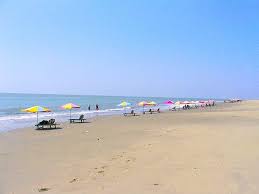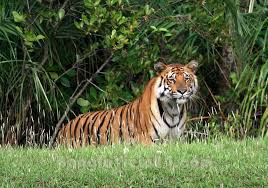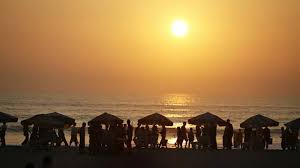
Bangladesh
Culture Name
BangladeshiAlternative Names
BengaliOrientation
Identification."Bangladesh" is a combination of the Bengali words,BanglaandDesh,meaning the country or land where the Bangla language is spoken. The country formerly was known as East Pakistan.Location and Geography
 Bangladesh straddles the Bay of Bengal in south Asia. To the west and north it is bounded by India; to the southeast, it borders Myanmar. The topography is predominantly a low-lying floodplain. About half the total area is actively deltaic and is prone to flooding in the monsoon season from May through September. The Ganges/Padma River flows into the country from the northwest, while the Brahmaputra/ Jamuna enters from the north. The capital city, Dhaka, is near the point where those river systems meet. The land is suitable for rice cultivation.
Bangladesh straddles the Bay of Bengal in south Asia. To the west and north it is bounded by India; to the southeast, it borders Myanmar. The topography is predominantly a low-lying floodplain. About half the total area is actively deltaic and is prone to flooding in the monsoon season from May through September. The Ganges/Padma River flows into the country from the northwest, while the Brahmaputra/ Jamuna enters from the north. The capital city, Dhaka, is near the point where those river systems meet. The land is suitable for rice cultivation.In the north and the southeast the land is more hilly and dry, and tea is grown. TheChittagong Hill Tractshave extensive hardwood forests. The vast river delta area is home to the dominant plains culture. The hilly areas of the northeast and southeast are occupied by much smaller tribal groups, many of which have strongly resisted domination by the national government and the population pressure from Bangladeshis who move into and attempt to settle in their traditional areas. In 1998 an accord was reached between the armed tribal group Shanti Bahini and the government.
Demography
 Bangladesh is the most densely populated nonisland nation in the world. With approximately 125 million inhabitants living in an area of 55,813 square miles, there are about 2,240 persons per square mile. The majority of the population (98 percent) is Bengali, with 2 percent belonging to tribal or other non-Bengali groups. Approximately 83 percent of the population is Muslim, 16 percent is Hindu, and 1 percent is Buddhist, Christian, or other. Annual population growth rate is at about 2 percent. Infant mortality is approximately seventy-five per one thousand live births. Life expectancy for both men and women is fifty-eight years, yet the sex ratios for cohorts above sixty years of age are skewed toward males. Girls between one and four years of age are almost twice as likely as boys to die.
In the early 1980s the annual rate of population increase was above 2.5 percent, but in the late 1990s it decreased to 1.9 percent. The success of population control may be due to the demographic transition (decreasing birth and death rates), decreasing farm sizes, increasing urbanization, and national campaigns to control fertility (funded largely by other nations).
Bangladesh is the most densely populated nonisland nation in the world. With approximately 125 million inhabitants living in an area of 55,813 square miles, there are about 2,240 persons per square mile. The majority of the population (98 percent) is Bengali, with 2 percent belonging to tribal or other non-Bengali groups. Approximately 83 percent of the population is Muslim, 16 percent is Hindu, and 1 percent is Buddhist, Christian, or other. Annual population growth rate is at about 2 percent. Infant mortality is approximately seventy-five per one thousand live births. Life expectancy for both men and women is fifty-eight years, yet the sex ratios for cohorts above sixty years of age are skewed toward males. Girls between one and four years of age are almost twice as likely as boys to die.
In the early 1980s the annual rate of population increase was above 2.5 percent, but in the late 1990s it decreased to 1.9 percent. The success of population control may be due to the demographic transition (decreasing birth and death rates), decreasing farm sizes, increasing urbanization, and national campaigns to control fertility (funded largely by other nations).Linguistic Affiliation
 The primary language is Bangla, called Bengali by most nonnatives, an Indo-European language spoken not just by Bangladeshis, but also by people who are culturally Bengali. This includes about 300 million people from Bangladesh, West Bengal, and Bihar, as well as Bengali speakers in other Indian states. The language dates from well before the birth of Christ. Bangla varies by region, and people may not understand the language of a person from another district. However, differences in dialect consist primarily of slight differences in accent or pronunciation and minor grammatical usages. Language differences mirror social and religious divisions. Bangla is divided into two fairly distinct forms:sadhu basha,learned or formal language, andcholit basha,common language. Sadhu basha is the language of the literate tradition, formal essaysand poetry, and the well educated. Cholit basha is the spoken vernacular, the language of the great majority of Bengalis. Cholit basha is the medium by which the great majority of people communicate in a country in which 50 percent of men and 26 percent of women are literate. There are also small usage variations between Muslims and Hindus, along with minor vocabulary differences.
The primary language is Bangla, called Bengali by most nonnatives, an Indo-European language spoken not just by Bangladeshis, but also by people who are culturally Bengali. This includes about 300 million people from Bangladesh, West Bengal, and Bihar, as well as Bengali speakers in other Indian states. The language dates from well before the birth of Christ. Bangla varies by region, and people may not understand the language of a person from another district. However, differences in dialect consist primarily of slight differences in accent or pronunciation and minor grammatical usages. Language differences mirror social and religious divisions. Bangla is divided into two fairly distinct forms:sadhu basha,learned or formal language, andcholit basha,common language. Sadhu basha is the language of the literate tradition, formal essaysand poetry, and the well educated. Cholit basha is the spoken vernacular, the language of the great majority of Bengalis. Cholit basha is the medium by which the great majority of people communicate in a country in which 50 percent of men and 26 percent of women are literate. There are also small usage variations between Muslims and Hindus, along with minor vocabulary differences.